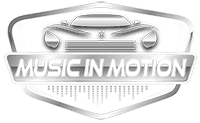According to a famous philosopher, life would be meaningless without music, and for those who enjoy music, improving their audio equipment is a lifelong journey rather than a destination. At Music in Motion, we agree and are recommending 5 Practical Ways to Improve Your Car Audio Experience. (Click here to learn more about installing high-end car audio systems in classic cars.)
Many individuals wind up spending a lot of money on the most cutting-edge equipment available to improve their automotive audio. The key to getting the most out of your car’s music system is deciding where to invest and what to enhance, not always spending more money.
Therefore, there are essentially two ways to improve the audio in your car: the first is to actually invest in upgrades and get the newest, best gadgets like head unit receivers, subwoofers, and speakers, and the second is to work on the car’s acoustics and modify the environment in such a way to get the most output from the devices that you have. Let’s examine both of these approaches in greater depth while thinking about modern as well as classic car restomods.
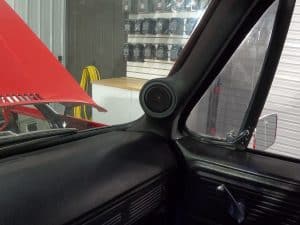
Aftermarket speakers designed for your car’s climate and culture are usually louder and function better. For instance, a factory speaker (regardless of how good it is in terms of audio quality) may stop giving its greatest output after a short time due to the deterioration of components in a nation like India where dust and pollution are huge concerns. A few businesses have developed speakers that can survive Northern Michigan’s harsh climatic conditions while providing unmatched audio quality due to years of study and innovation to address this issue.
They focus on Northern Michigan consumers’ acoustic preferences and oppose environmental degradation to enhance music listening. These speakers have punchier bass and crisp vocals and instruments. A High Rigid IMPP Cone makes these speakers durable, and a larger magnet sends more power to the voice coil for crisper sound.
To get that deep bass, you can also add an additional subwoofer if you have the money for it. Even if it ends up costing you a little bit extra, it greatly improves your ability to enjoy music.
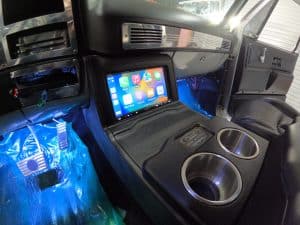
Unsurprisingly, doing so causes the voice quality to degrade. People frequently use an auxiliary cable to connect their phones to their car stereos and rely on the phone’s subpar digital-to-analog converter.
Consequently, it is preferable to locate a head unit that supports a USB connection and has an excellent integrated DAC (Digital to Analogue Converter). These head units read digital data from your device and convert it into audio signals for the speakers and amplifiers.
In many ways, an aftermarket head unit can be a great improvement. In addition to vastly improving audio quality, it also provides additional preamp outputs that can be quite useful if you decide to install an amplifier in the future.
Consider Pioneer’s head units for example. The head unit boasts a fresh, extremely responsive, and fully customizable UI design. The whole process is relaxing and pleasurable because of the flexibility and simplicity it offers. It also has a ton of amenities, like built-in Bluetooth, Apple CarPlay, Android Auto, and Youtube via WebLink.
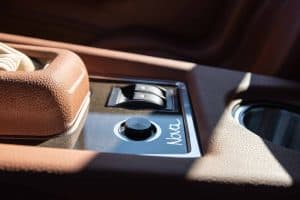
Factory automotive audio systems are rather basic, and while they do the job, they lack the subtleties that would appeal to a seasoned music enthusiast’s ears. Therefore, if you are among the top music listeners, your car’s audio system needs more parts. Although adding amplifiers, signal processors, and band equalizers can be pricey, they all have the power to take your car’s audio from mediocre to spectacular.
Consider the Pioneer GM-DX874 audio amplifier as an illustration. A class-D digital amplifier that is exceptionally efficient and roughly 50% smaller in size than other traditional amplifiers on the market, it represents a significant boost in power output capability. This also makes installation simple.
Additionally, Pioneer sells a superb band equalizer under the name DEQ-S1000A. Users are able to enhance the sound quality of their factory-installed audio system thanks to this 48-bit sound processor. It not only improves the quality of the default system’s audio, but it also gives the user a number of sound tweaking choices. The nicest feature is that a smartphone can easily be used to manage all audio settings. (Click here to learn more about high end car audio installation)
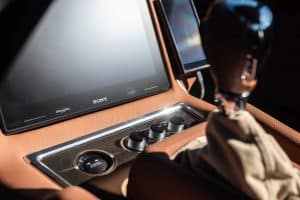
People frequently criticize the sound quality of their audio equipment, but they frequently ignore the caliber of the audio files they are currently playing. The source of the audio file is just as crucial to getting the finest in-vehicle audio experience as the elements of the automobile audio system.
The issue with digital music files is that they are frequently overly compressed, which causes the audio to lose its definition. A lot of us have old music collections that we either bought or got from others in the past. If the collections are ten years old or older, they probably contain a lot of compressions. You wouldn’t obtain the desired sound quality as a result.
In this case, switching to a lower level of compression or purchasing audio files that are encoded in a lossless format, commonly known as high-resolution or HD audio, is the recommended course of action. The quality of the audio file is determined by the format type. While MP3 and AAC give standard quality, ALAC, WAV, and FLAC, among others, offer higher resolution and greater sound quality. The only drawback is that you might not be able to carry along your complete connection because they take up more room on the device. However, unless you’re planning a really long trip, you probably don’t need to.
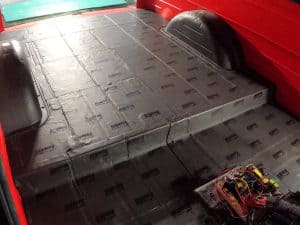
The environment outside the car is a cacophony of noises, including honking cars, screeching tires, chattering crowds, shouting sellers, and other things. Luckily, sound-deadening materials can be used to reduce these disturbances. You must have noticed that cars don’t have a very effective system to keep the road noise from getting in, which can destroy your entire music experience unless you’ve already taken some efforts in this area.
Installing a dampening material in the areas of your automobile that are most vulnerable to being penetrated by outside noise is one of the easiest and maybe the least expensive solutions to reduce noise. For example, to reduce road noise, place Dynamat sheets under your carpet and within your door panels. You can prevent the engine noise from entering the car by doing the same with your hood.
To prevent speaker vibrations from entering the car’s metal frame and creating obnoxious buzzing and rattling sounds, you can also put different dampening materials in the areas around your speakers. The air within the car is the only thing that needs to vibrate to provide a clean, sharp sound quality. You may significantly improve your car’s audio quality by making sure of this.
Particularly notable for creating excessive vibrations in the car’s metal chassis is the bass component of sound. Therefore, if you’re a bass head and installing a subwoofer, always remember to line the interior of the trunk lid, the interior of the wall, and the floor with a dampening substance.
You don’t have to fix everything at once; as we said in the introduction, improving automobile audio is a journey rather than a goal. You can take your time and climb the ladder in accordance with your needs and available funds, taking pleasure in the beautiful musical rewards of your labors at each step.
Contact the team at Music in Motion in Boyne City, Michigan for all of your car and marine audio needs. We specialize in modern, exotic, and classic cars. In addition, we do a lot of work on high-end marine audio systems.
